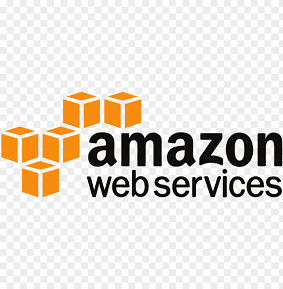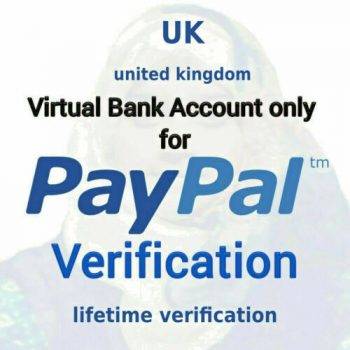Aws 20 rdp limit account aws solutions
$20.00
Now we are providing Aws 20 Rdp create limit panel account. You can make free remote desktop Rdp many country USA, Uk, Canada, Australia, France, Germany, Netherlands, Irelander, any more country.
Pease contact me via skype before order: ———
skype id: md.rafiq802
Description
An In-Depth Look at Amazon Virtual Private Cloud (VPC) in aws solutions
#aws solutions Amazon Virtual Private Cloud (VPC) is a vital component of Amazon Web Services (AWS) that enables users to create a private virtual network within the AWS cloud environment. VPC offers a secure and isolated network infrastructure, allowing users to provision resources, such as Amazon EC2 instances, RDS databases, and Lambda functions, while maintaining control over their network settings. This article provides a comprehensive overview of AWS Amazon VPC, exploring its features, benefits, architecture, security mechanisms, and best practices. #aws solutions

I. Key Features of Amazon VPC #aws solutions A. Private Subnets: VPC allows users to create one or more private subnets within their virtual network. These subnets are isolated from the public internet and provide an additional layer of security for sensitive resources. B. Public Subnets: Public subnets allow resources to have direct access to the internet. Users can configure internet gateways and elastic IP addresses to enable inbound and outbound traffic. C. Elastic IP Addresses: VPC provides Elastic IP addresses, which are static, public IPv4 addresses that can be assigned to resources within the VPC. These addresses allow for easier management of resources and enable persistent connectivity. D. Security Groups: Security Groups act as virtual firewalls for EC2 instances and control inbound and outbound traffic. Users can define rules to allow or deny specific traffic based on protocols, ports, and IP addresses. E. Network Access Control Lists (NACLs): NACLs are stateless packet filters that control traffic at the subnet level. They provide an added layer of security by allowing users to define rules for inbound and outbound traffic. F. VPC Peering: VPC Peering enables connectivity between VPCs in the same or different AWS accounts, allowing resources to communicate securely. G. VPN Connections: VPC supports secure site-to-site connectivity using Virtual Private Network (VPN) connections. This allows users to establish encrypted connections between their on-premises infrastructure and the resources in their VPC. H. Direct Connect: AWS Direct Connect enables users to establish dedicated network connections between their on-premises data centers and AWS. This provides faster and more reliable access to resources in the VPC. #amazon aws rdp
II. Amazon VPC Architecture #aws solutions A. VPC Components:
- Subnets: Divides the VPC into smaller IP address ranges.
- Internet Gateway: Provides a gateway for traffic between the VPC and the internet.
- Route Tables: Control the traffic between subnets and internet gateways.
- Network Address Translation (NAT) Gateway: Allows resources in private subnets to access the internet.
- Elastic IP Addresses: Provide static, public IP addresses for resources.
- VPC Peering Connections: Enable communication between VPCs.
- Virtual Private Gateway: Enables secure communication between VPC and on-premises networks.
- Customer Gateway: Represents a customer’s side of a VPN connection. B. VPC Design Considerations:
- IP Addressing: Plan IP address ranges carefully to avoid conflicts and accommodate future growth.
- Availability Zones: Distribute subnets across multiple Availability Zones for high availability.
- Routing: Configure routing tables to control traffic flow between subnets and the internet.
- Security: Use security groups and NACLs to enforce access control and protect resources.
- Connectivity: Establish VPN connections or use AWS Direct Connect for secure connectivity to on-premises infrastructure.
- Scalability: Design the VPC to accommodate future growth and scale by considering factors like subnet sizing and resource placement.
III. Security and Compliance in Amazon VPC #aws solutions A. Security Groups and NACLs: Security Groups and NACLs play a crucial role in securing resources within the VPC. By defining granular rules, users can control inbound and outbound traffic, limiting access to only necessary ports and protocols. B. Network Isolation: VPC provides network isolation by default, ensuring that resources in different VPCs are isolated from each other. Additionally, VPC Flow Logs enable the monitoring and auditing of network traffic for security analysis. C. Encryption: Users can leverage AWS Key Management Service (KMS) to encrypt data at rest and in transit within their VPC. This adds an extra layer of security to sensitive data and ensures compliance with industry regulations. D. Compliance: AWS offers a wide range of compliance certifications, including GDPR, HIPAA, and PCI DSS. By using VPC, users inherit the security and compliance benefits provided by AWS’s infrastructure and services.
IV. Best Practices for Amazon VPC #aws solutions A. Planning and Design:
- Start with a Well-Defined Architecture: Clearly define the VPC’s purpose, subnet structure, IP address ranges, and connectivity requirements.
- Segmentation: Divide the VPC into subnets based on specific use cases and security requirements. B. Security and Access Control:
- Use Least Privilege: Apply the principle of least privilege when configuring security groups and NACLs to restrict access to resources.
- Monitor and Audit: Enable VPC Flow Logs and use AWS CloudTrail to monitor and audit network traffic and API calls. C. Network Performance:
- Use Placement Groups: Utilize placement groups to ensure low-latency, high-bandwidth communication between instances.
- Optimize Network Routing: Implement efficient routing strategies using route tables to minimize latency and improve network performance. D. High Availability and Resilience:
- Multi-Availability Zone Deployment: Distribute resources across multiple Availability Zones to achieve high availability and fault tolerance.
- Automated Backups and Disaster Recovery: Implement backup and disaster recovery mechanisms for critical resources using AWS services like EBS snapshots and Amazon RDS automated backups. E. Cost Optimization:
- Right-Sizing: Choose appropriate instance types and sizes to optimize costs while meeting performance requirements.
- Resource Tagging: Use resource tagging to track and allocate costs accurately.
- Reserved Instances: Utilize AWS Reserved Instances to reduce costs for long-term workload deployments.
Conclusion (Word Count: 200) Amazon Virtual Private Cloud (VPC) is a powerful service within AWS that allows users to create a secure and isolated virtual network in the cloud. By leveraging its key features, understanding its architecture, implementing robust security measures, and following best practices, users can build scalable, highly available, and cost-effective network infrastructures. Amazon VPC provides the foundation for deploying various AWS services and facilitates secure connectivity between on-premises environments and the AWS cloud. With its flexibility and extensive range of capabilities, Amazon VPC empowers organizations to design and implement highly customizable network architectures that meet their specific requirements. #aws solutions







kludjsenan –
Smooth purchase….definitely buying again